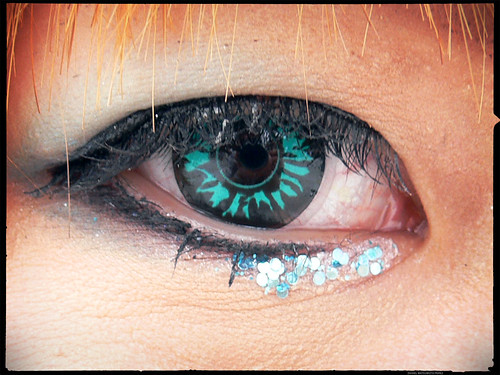Nancy Pelosi, Respectfully Maintaining Her Own Image
 FASHION
FASHIONBy Robin Givhan
Washington Post Staff Writer
Friday, April 6, 2007.
Over the past week, House Speaker Nancy Pelosi toured the Middle East with a congressional entourage and a generous collection of scarves. The scarves provided her with an additional bit of sartorial modesty when the situation required it and she was also able to use them to cover her head when protocol dictated -- such as when she visited the tomb of John the Baptist inside a mosque in Damascus and tied one around her head in the manner of a Hitchcock heroine.
Other Western women have visited the Middle East and have had to cover their heads, but they often looked as though that requirement came as a surprise and in a pinch they reached for the nearest available square of fabric. Being respectful demands a certain mindfulness in order not to look like one is wearing a tablecloth.
The point is not to have some glitzy bit of silk to cover the head -- being flashy would defeat the point. It is to avoid looking unprepared and awkward. Grabbing half-heartedly for the table linens may be following the letter of the cultural rules, but not the spirit. To some degree, it is reminiscent of when a man arrives for an event that requires business attire and he is wearing black walking shoes instead of dress ones. He gets a pass, but really, he should know better.
Pelosi's scarf collection included a red print style that she wore around her neck when she was in Jerusalem. In Syria and Saudi Arabia, she wore one dominated by yellow. And then while in Beirut, she had a blue scarf tied jauntily around the strap of her shoulder bag.
In each example, the scarf was incorporated into the day's wardrobe. One hesitates to say that she accessorized her ensembles with the scarves because that makes it sound as though their significance can be equated with a pair of earrings or a strand of pearls. They were more meaningful than that. They allowed her to be respectful of the day's hosts while maintaining her own public identity. She looked like herself and she maintained control of the visual message.
There are few images more discomforting than public figures thrust into foreign cultures and required to wear the host's traditional attire. Almost without exception the visitors tend to look smaller and more vulnerable. They evoke the uneasiness of children who have been dressed by a parent, teacher, minister or other authority figure. Wearing something unfamiliar or inappropriate in a public forum has a way of deflating even the most pompous figures. Their body language communicates their uneasiness. Our eyes register the sight as jarring.
One such searing image was captured in November, when world leaders including President Bush, Russia's Vladimir Putin, Canada's Stephen Harper and Chile's Michelle Bachelet gathered for the Asia-Pacific Economic Cooperation summit in Hanoi. During the conference, the group was photographed dressed in traditional Vietnamese costumes. They all looked, if not like they wanted to be somewhere else, at least like they wanted to be wearing something else.
Everyone has tools they rely on to help them look as dignified as they feel. Take away those aides and it can be more difficult to maintain one's bearing.
Clothing can evoke authority, but at the most basic level it is an expression of control. Prison coveralls wrest autonomy from convicts. School uniforms attempt to level the playing field so that no clique can dominate the student body. In both cases, individuals fight to reclaim a sense of self, whether by shortening the hem of a skirt or accessorizing the body with tattoos.
When the recently released British detainees were trotted in front of the media in Iran, the men were not in the uniform of their country, which would have been a reminder of their international stature, but rather in look-alike shabby suits and no ties. They were dressed in the image of Iran's president, Mahmoud Ahmadinejad.
Western mufti was appropriated and served as a stand-in for an emasculating uniform, making the seamen appear small and uncertain. The lone woman looked like she had been overpowered by someone else's cultural traditions.
Pelosi, with her carefully coordinated scarves, respected her foreign surroundings without ceding any control. She assiduously avoided leaving a trail of cringe-inducing photographs in which she looked so uncomfortable she might as well have been dressed in a coat of porcupine quills. Her multipurpose, culturally adaptable scarves underscored the reality that sometimes it not only matters who you are, but also what you wear.


0 Comments:
Post a Comment
<< Home